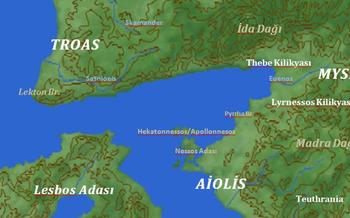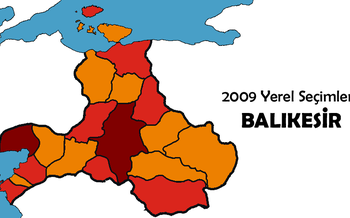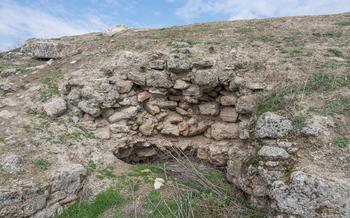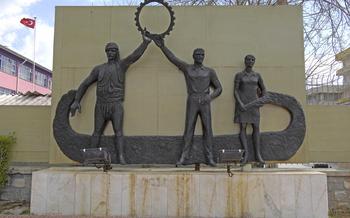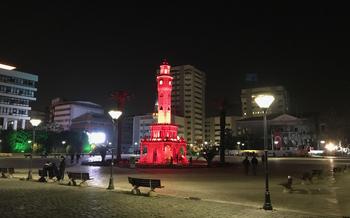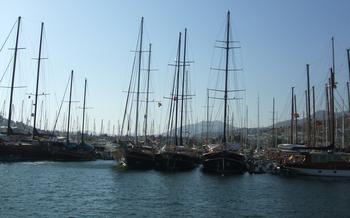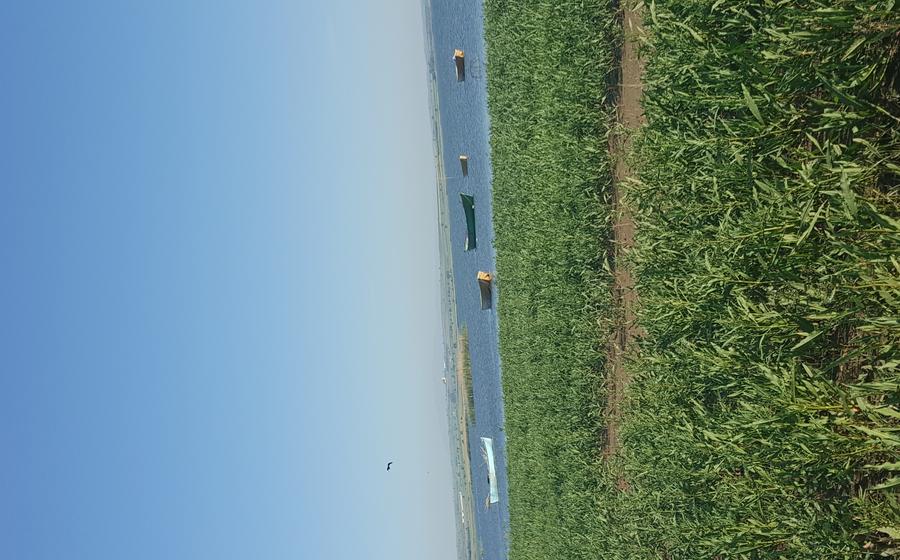
The Mosaic Road in Edremit
- The Mosaic Road: A Journey Through History
- Edremit: The Gateway to the Mosaic Road
- Çamlıköy: The Village of Mosaics
- Antandros: The Ancient City of Legends
- Behramkale: A Village with a View
- Ayvalık: A Charming Coastal Town
- Cunda Island: A Hidden Gem
- Sarımsaklı: A Beach Paradise
- Altınoluk: A Natural Wonder
- Ephesus: The Ancient City of Wonders
- Pamukkale: The Cotton Castle
- Must-See Attractions in Pamukkale
- Where to Find More Information About Pamukkale
- Insider Tip: The Best Time to Visit
The Mosaic Road: A Journey Through History
The Mosaic Road is a scenic and historical route that winds its way through the stunning landscapes of Turkey's Aegean coast. It stretches for over 600 kilometers, connecting the ancient cities of Çanakkale in the north to Antalya in the south. The road is named after the magnificent mosaics that adorn the floors and walls of many of the ancient sites along its path, offering a glimpse into the rich cultural heritage of the region.
The Mosaic Road offers a unique opportunity to explore Turkey's diverse history and culture, from the ancient Greek and Roman civilizations to the Byzantine and Ottoman empires. Along the way, visitors can marvel at the ruins of ancient cities, visit traditional villages, and soak up the natural beauty of the region, with its stunning coastline, lush forests, and picturesque mountains. Whether you're a history buff, a nature lover, or simply looking for an unforgettable travel experience, the Mosaic Road is sure to captivate and inspire.
Edremit: The Gateway to the Mosaic Road
Edremit is a charming coastal town located in the northwestern part of Turkey, in the Balıkesir province. It is situated on the shores of the Gulf of Edremit, which is known for its stunning turquoise waters and picturesque beaches. Edremit is a popular tourist destination, attracting visitors from all over the world who come to enjoy its natural beauty, historical sites, and delicious cuisine.
The town is famous for its olive oil production, which is considered to be some of the best in the world. Edremit is also home to a number of ancient ruins, including the remains of the ancient city of Assos, which is located just a short drive away.
Some of the must-see attractions in Edremit include the Edremit Castle, which offers stunning views of the town and the surrounding area; the Edremit Museum, which houses a collection of artifacts from the town's history; and the Edremit Bazaar, where you can find a variety of souvenirs and local products.
For more information about Edremit, you can visit the town's official website or contact the Edremit Tourism Information Center.
Çamlıköy: The Village of Mosaics
Çamlıköy, a picturesque village nestled in the embrace of the Kaz Mountains, is renowned for its exquisite collection of well-preserved mosaics, earning it the title of "The Village of Mosaics." Situated amidst lush greenery and surrounded by rolling hills, Çamlıköy offers a serene retreat for travelers seeking a glimpse into Turkey's rich artistic heritage.
Strolling through the cobblestone streets of Çamlıköy, visitors are greeted by the harmonious blend of history and nature. The village is home to several churches adorned with intricate mosaics that depict biblical scenes and mythological figures. The Church of Panagia Glykofilousa, with its stunning mosaic of the Virgin Mary, is a testament to the village's Byzantine past.
The Çamlıköy Museum, a treasure trove of archaeological wonders, houses an impressive collection of mosaics discovered in the village and its surroundings. These intricate artworks, dating back to the Roman and Byzantine periods, provide a fascinating glimpse into the lives and beliefs of the region's ancient inhabitants.
Beyond its mosaic masterpieces, Çamlıköy offers a range of attractions for visitors to explore. Take a leisurely hike through the Kaz Mountains National Park, immersing yourself in the beauty of its diverse flora and fauna. Discover hidden waterfalls, cascading down rocky slopes, and revel in the tranquility of nature's embrace.
For those seeking a culinary adventure, Çamlıköy's local cuisine offers a tantalizing array of flavors. Savor the delights of traditional Turkish dishes, prepared with fresh, seasonal ingredients, and indulge in the sweetness of homemade pastries, a testament to the village's culinary prowess.
Whether you're a history buff, a nature enthusiast, or simply seeking a peaceful escape, Çamlıköy promises an unforgettable experience. With its captivating mosaics, breathtaking scenery, and warm hospitality, this charming village is a must-visit destination on the Mosaic Road.
Antandros: The Ancient City of Legends
Antandros, located on the Gulf of Edremit in the province of Balıkesir, Turkey, is a small town steeped in history and mythology. According to legend, the city was founded by Antandros, the son of the Trojan hero Phrygius. Antandros was said to have been a skilled hunter and fisherman who traveled to the region to hunt for deer and fish. He eventually settled in the area and founded the city that bears his name.
The ancient city of Antandros played an important role in the region's history. It was a member of the Aeolian League, a confederation of twelve ancient Greek city-states located in the northwestern part of Anatolia. Antandros was also a center of trade and commerce, and its port was used by ships traveling between the Aegean Sea and the Black Sea.
In later centuries, Antandros came under the control of various empires, including the Roman Empire and the Byzantine Empire. The city was eventually abandoned in the 15th century after it was destroyed by an earthquake.
Today, Antandros is a small village with a population of around 2,000 people. The village is home to a number of historical sites, including the ancient city walls, the ruins of a Roman theater, and the remains of a Byzantine church. Antandros is also a popular destination for tourists who come to enjoy the town's beautiful scenery and its many historical sites.
Behramkale: A Village with a View
Behramkale is a small village located in the Ayvalık district of Balıkesir, Turkey. The village is situated on a hilltop overlooking the Aegean Sea and offers stunning views of the surrounding countryside. Behramkale is also home to a number of historical sites, including the remains of a Byzantine castle and a 14th-century mosque.
Behramkale is a popular tourist destination for those interested in history, nature, and culture. The village is home to several small hotels, restaurants, and cafes, and there are a variety of activities to enjoy in the area, such as hiking, biking, and swimming.
Must-see attractions in Behramkale:
-
Behramkale Castle: This Byzantine castle was built in the 6th century AD and is one of the best-preserved castles in Turkey. The castle offers stunning views of the surrounding countryside and is a popular spot for tourists and locals alike.
-
Behramkale Mosque: This 14th-century mosque is one of the oldest mosques in Turkey. The mosque is made of stone and features a beautiful courtyard.
-
Behramkale Bazaar: This traditional Turkish bazaar is a great place to find souvenirs and local products. The bazaar is open every day of the week and is a great place to experience the local culture.
-
Topçam Beach: This beach is located just a short walk from Behramkale and is a great place to relax and enjoy the sun and the sea. The beach is also a popular spot for windsurfing and kiteboarding.
Where to find more information:
-
Behramkale Tourism Information Office: The tourism information office is located in the village center and can provide you with information on the village and the surrounding area.
-
Behramkale Visitor Center: The visitor center is located at the entrance to the village and provides information on the history and culture of Behramkale.
-
Behramkale Website: The village website provides information on the village, its attractions, and the surrounding area.
Ayvalık: A Charming Coastal Town
Ayvalık, a picturesque coastal town located in the northwestern province of Balıkesir, is a popular destination for both domestic and international tourists. With its stunning natural beauty, historical sites, and vibrant atmosphere, Ayvalık offers a unique blend of relaxation and adventure.
Ayvalık is renowned for its stunning coastline, which boasts crystal-clear waters, sandy beaches, and secluded coves. Visitors can enjoy swimming, sunbathing, snorkeling, and diving in the pristine waters of the Aegean Sea. The town is also home to several historical sites, including the Ayvalık Castle, which dates back to the 16th century, and the Cunda Island Monastery, a former Greek Orthodox monastery.
Beyond its natural and historical attractions, Ayvalık is also known for its vibrant atmosphere. The town is home to a variety of shops, restaurants, and bars, as well as a lively nightlife scene. Visitors can enjoy traditional Turkish cuisine, shop for souvenirs, and experience the town's unique culture.
For more information on Ayvalık, visitors can visit the Ayvalık Tourism Information Office or the Ayvalık Municipality website. These resources provide detailed information on the town's attractions, events, and accommodations.
Cunda Island: A Hidden Gem
Cunda Island, also known as Alibey Island, is a small island located just off the coast of Ayvalık. It is a popular tourist destination, known for its beautiful beaches, charming streets, and delicious seafood.
The island is home to a number of historical sites, including the Cunda Castle, which was built in the 14th century by the Genoese. The castle is now a museum, and it offers stunning views of the island and the surrounding sea.
Another popular attraction on Cunda Island is the Aya Yorgi Monastery, which was built in the 19th century. The monastery is located on a hilltop, and it offers panoramic views of the island.
Cunda Island is also a great place to enjoy the outdoors. There are a number of hiking trails on the island, and there are also several beaches where you can swim, sunbathe, and relax.
If you are looking for a hidden gem in Turkey, then Cunda Island is definitely worth a visit. The island offers a unique blend of history, culture, and natural beauty.
Where to Stay on Cunda Island
There are a number of hotels and guesthouses on Cunda Island. If you are looking for a luxurious experience, then you can stay at the Cunda Island Resort & Spa. The resort offers a variety of amenities, including a private beach, a swimming pool, and a spa.
If you are looking for a more budget-friendly option, then you can stay at one of the many guesthouses on the island. Guesthouses offer basic amenities, but they are typically located in the heart of the village, which makes it easy to explore the island on foot.
Where to Eat on Cunda Island
Cunda Island is known for its delicious seafood. There are a number of restaurants on the island where you can enjoy fresh fish and seafood dishes.
If you are looking for a truly unique dining experience, then you should try Balıkçı Sabahattin. This restaurant is located in a cave, and it offers stunning views of the sea. The menu features a variety of fresh fish and seafood dishes, all of which are prepared to perfection.
How to Get to Cunda Island
Cunda Island is located just off the coast of Ayvalık. You can reach the island by ferry from Ayvalık. The ferry ride takes about 20 minutes.
You can also reach Cunda Island by car. There is a bridge that connects the island to the mainland. The bridge is located about 10 kilometers from Ayvalık.
Sarımsaklı: A Beach Paradise
Sarımsaklı is a beautiful coastal town located in the Ayvalık district of Balıkesir. It is famous for its stunning beaches, crystal-clear waters, and lush green nature. Sarımsaklı is a popular destination for both domestic and international tourists, who come to enjoy the sun, the sea, and the sand.
The main beach in Sarımsaklı is Sarımsaklı Beach, which is known for its soft, golden sand and shallow waters. The beach is perfect for swimming, sunbathing, and building sandcastles. There are also several beach clubs in Sarımsaklı, where you can rent sun loungers and umbrellas, and enjoy a variety of food and drinks.
In addition to its beaches, Sarımsaklı is also home to a number of historical and cultural attractions. The town is home to the Sarımsaklı Museum, which houses a collection of artifacts from the region's past. There is also the Sarımsaklı Mosque, which is a beautiful example of Ottoman architecture.
If you are looking for a relaxing beach vacation in Turkey, Sarımsaklı is the perfect destination for you. With its stunning beaches, crystal-clear waters, and lush green nature, Sarımsaklı is a place where you can truly unwind and enjoy the beauty of the Turkish coast.
Must-see attractions in Sarımsaklı:
- Sarımsaklı Beach: The main beach in Sarımsaklı is known for its soft, golden sand and shallow waters.
- Sarımsaklı Museum: The museum houses a collection of artifacts from the region's past.
- Sarımsaklı Mosque: A beautiful example of Ottoman architecture.
- Ayvalık Islands: A group of islands located just off the coast of Sarımsaklı. The islands are a popular destination for boat trips and picnics.
- Cunda Island: A small island located near Sarımsaklı. The island is known for its charming streets, traditional houses, and delicious seafood restaurants.
Where to find more information about Sarımsaklı:
- Sarımsaklı Municipality: The municipality's website has information on the town's history, culture, and attractions.
- Sarımsaklı Tourism Information Office: The office is located in the town center and provides information on hotels, restaurants, and things to do in Sarımsaklı.
- Turkish Ministry of Culture and Tourism: The ministry's website has information on Sarımsaklı and other tourist destinations in Turkey.
Altınoluk: A Natural Wonder
Altınoluk is a small town located in the Edremit Gulf, in the Balıkesir province of Turkey. It is famous for its natural beauty, including its long sandy beach, crystal-clear waters, and lush green forests. Altınoluk is also home to a number of historical and cultural attractions, including the ruins of the ancient city of Cyme and the Altınoluk Museum.
Must-See Attractions in Altınoluk:
-
Altınoluk Beach: This beautiful beach is known for its soft white sand, crystal-clear waters, and gentle waves. It is a popular spot for swimming, sunbathing, and water sports.
-
Altınoluk Museum: This museum houses a collection of artifacts from the ancient city of Cyme, including ceramics, sculptures, and coins. It also has a section on the natural history of the region.
-
Cyme Ancient City: The ruins of this ancient city are located on a hill overlooking Altınoluk. Cyme was founded in the 11th century BC and was once a major center of trade and commerce.
-
Kızılkeçili Village: This traditional Turkish village is located in the mountains near Altınoluk. It is known for its beautiful scenery, its friendly people, and its delicious food.
Where to Find More Information About Altınoluk:
-
Altınoluk Municipality: The Altınoluk Municipality website has information on the town's history, attractions, and events.
-
Edremit Chamber of Commerce: The Edremit Chamber of Commerce website has information on businesses and services in Altınoluk, as well as on the town's history and culture.
-
Altınoluk Tourism Information Center: The Altınoluk Tourism Information Center provides information on the town's attractions, as well as on tours and activities in the area.
Ephesus: The Ancient City of Wonders
Ephesus, located on the western coast of Turkey, is one of the most well-preserved ancient cities in the world. Once a prosperous port city and a major center of Christianity, Ephesus is now a UNESCO World Heritage Site and one of the most popular tourist destinations in Turkey.
The city was founded by Greek colonists in the 10th century BC and quickly became a major trading center. In the 1st century AD, Ephesus was incorporated into the Roman Empire and became the capital of the Roman province of Asia. The city reached its peak during the 2nd and 3rd centuries AD, when it had a population of over 250,000 people.
Ephesus is home to a number of impressive ancient ruins, including the Temple of Artemis, one of the Seven Wonders of the Ancient World; the Library of Celsus, one of the largest libraries in the ancient world; and the Great Theater, which could seat up to 25,000 people. Other highlights of Ephesus include the Agora, the Odeon, and the Hadrian's Gate.
Ephesus is a fascinating city with a rich history. It is a must-see for anyone interested in ancient history or architecture. Visitors can explore the ruins, learn about the city's past, and experience the unique atmosphere of this ancient city.
For more information on Ephesus, visit the following websites:
Pamukkale: The Cotton Castle
Pamukkale, also known as the "Cotton Castle," is a natural wonder located in Denizli Province, Turkey. It is famous for its cascading white travertine terraces, formed by the deposition of calcium carbonate from hot springs. The terraces resemble giant cotton balls, giving the site its name.
Pamukkale is a UNESCO World Heritage Site and is visited by millions of tourists each year. The thermal waters of the springs are said to have therapeutic properties, and visitors can bathe in the pools or enjoy a massage. There are also several ancient ruins in the area, including the ruins of the ancient city of Hierapolis.
Must-See Attractions in Pamukkale
- Travertine Terraces: The main attraction of Pamukkale is its travertine terraces. Visitors can walk along the terraces and take in the stunning views. The terraces are especially beautiful at sunset, when they glow with a golden light.
- Hierapolis: The ancient city of Hierapolis is located near Pamukkale. The city was founded in the 2nd century BC and was once a major center of trade. Visitors can explore the ruins of the city, including the theater, the temple of Apollo, and the necropolis.
- Cleopatra's Pool: Cleopatra's Pool is a large pool filled with thermal water. The pool is said to have been a favorite bathing spot of Cleopatra, the Queen of Egypt. Visitors can swim in the pool or relax on the surrounding sun loungers.
Where to Find More Information About Pamukkale
- Official Website of Pamukkale: The official website of Pamukkale provides information on the site's history, geology, and attractions. It also includes a map of the site and information on how to get there.
- Turkish Ministry of Culture and Tourism: The Turkish Ministry of Culture and Tourism website provides information on Pamukkale and other tourist attractions in Turkey.
- Lonely Planet Turkey: The Lonely Planet Turkey guidebook provides information on Pamukkale and other destinations in Turkey.
Insider Tip: The Best Time to Visit
The best time to visit the Mosaic Road is during the shoulder seasons, from April to May and from September to October. During these months, the weather is mild and pleasant, and the crowds are smaller. This makes for a more relaxed and enjoyable experience.
Some of the advantages of visiting during the shoulder seasons include:
- The weather is warm and sunny, but not too hot.
- The crowds are smaller, so you can avoid the long lines and wait times.
- The prices of flights, hotels, and tours are often lower.
Some of the disadvantages of visiting during the shoulder seasons include:
- Some attractions may be closed or have reduced hours.
- The water in the Aegean Sea may be too cold for swimming.
- The weather can be unpredictable, so it's important to pack for all types of weather.
Overall, the shoulder seasons are the best time to visit the Mosaic Road. The weather is pleasant, the crowds are smaller, and the prices are lower. If you're looking for a relaxed and enjoyable experience, this is the time to go.

